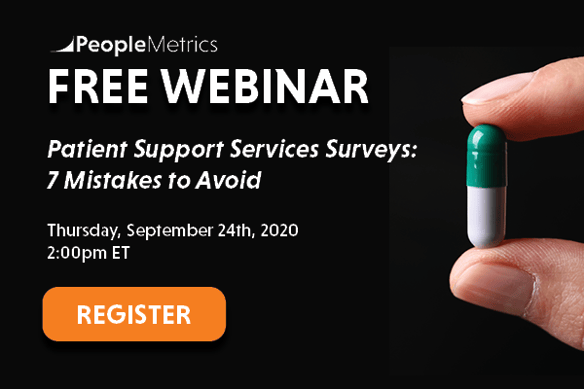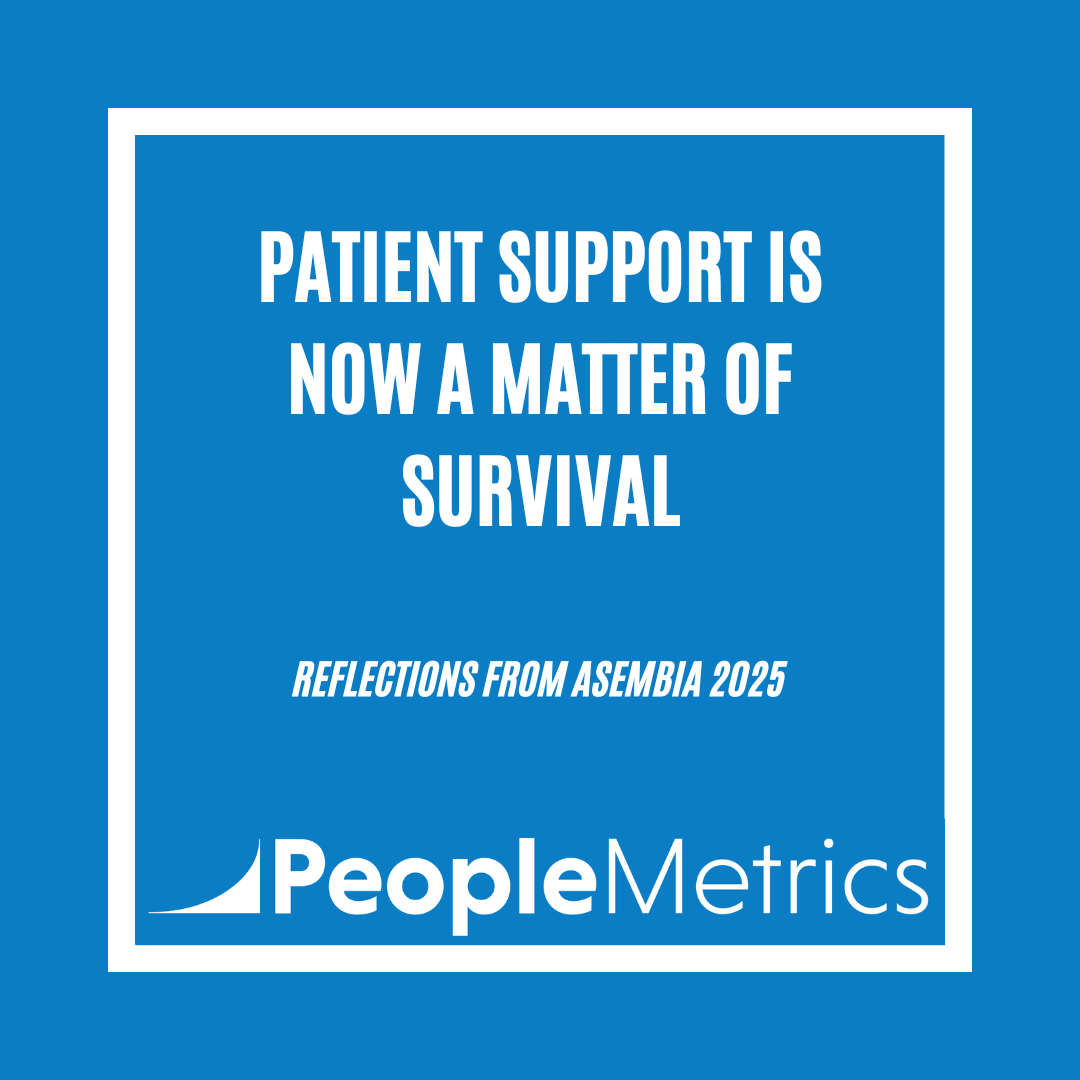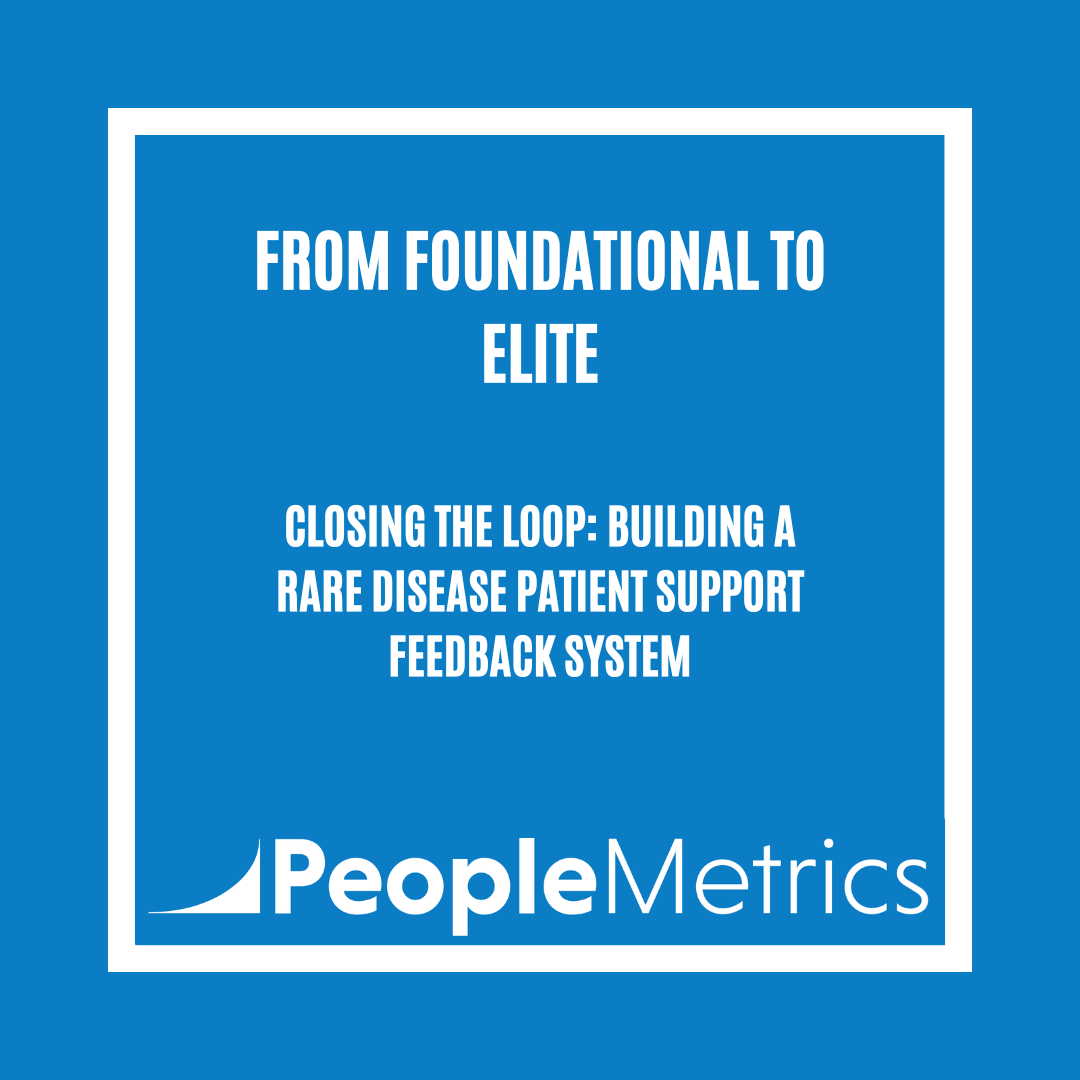As we all know, patients are also consumers.
The patient who is onboarding onto a new medication has also had consumer experiences that set their expectations.
Apple, Peloton, Amazon, Netflix, Hyatt… you name it, your patients have probably experienced it.
A hallmark of a superior customer experience is one that is consistent, no matter the channel or touchpoint. All the companies listed above work tirelessly to deliver a consistently great experience.
This hallmark rings true for patient support services as well.
Manufacturers who deliver a consistently excellent experience through the treatment journey will deliver superior patient outcomes.
And patient feedback along the way is critical if you want to know how to deliver that great patient experience.

But be careful — it’s tempting to measure everything all at once.
Don’t do that.
That’s how you get overwhelmed.
When building a patient support services feedback program, it’s important to start with something that you can manage.
Think of it as “tiny measurements” to get you started.
There are two tiny measurements you should consider to begin:
First, a relationship survey is often a good option to begin with — especially if you have not measured the patient experience with patient support services previously.
This approach is simple. You reach out to all your current patients, no matter what stage of the treatment journey, and ask them questions about their experiences to date.
The benefit of doing this is that you get a broader sense of their experience and the high/low points.
You also get a large volume of responses quickly, so right away you’ll have a lot to work with.
This also guides your future survey design as you use this feedback to decide what specific touchpoints and questions should be prioritized for later surveys.
Whether or not you start with a relationship survey, it’s a good idea to conduct a relationship survey at least once a year to understand how far you have come and identify any emerging issues.
A great second option is to start with a key touchpoint, such as onboarding or first treatment.
At PeopleMetrics, we have found that the onboarding touchpoint is the best place to start a patient support services measurement program.
The benefit of this is that you’re reaching out to patients and HCPs at a key delivery milestone, and the feedback is timely and actionable. You can immediately follow up with patient concerns at critical moments.
It also allows you to get more targeted feedback that can be used for individual coaching and recognition of case managers.
After getting your program started, you can expand in any number of ways.
Manufacturers are collecting feedback on everything from case managers, patient liaisons/CNEs, specialty pharmacies, websites and apps, HCPs and office managers, first infusion, and key intervals after onboarding (6 months, 12 months, etc.).
But first, start with tiny measurements – either a relationship survey or an onboarding touchpoint survey.
You will be glad you did.
|
Patient Support Surveys & Software. Get In Touch: |
About the Author
Sean McDade, PhD is the author of Listen or Die: 40 Lessons That Turn Customer Feedback Into Gold. He founded PeopleMetrics in 2001 and is the architect of the company’s customer experience management (CEM) software platform. As CEO, he guides the company’s vision and strategy. Sean has over 20 years of experience helping companies measure and improve the customer experience. Earlier in his career, he spent five years at the Gallup Organization, where he was the practice leader of their consulting division. His company offers CEM software with advanced machine learning solutions and hands-on analytical support to help companies make sense of their CX data. Sean holds a Ph.D. in Business Administration with a specialization in marketing science from Temple University in Philadelphia. He has published eight articles in peer-reviewed scholarly journals and has taught over 25 marketing classes. Sean was named a 40 under 40 award recipient of the Philadelphia region. He is an active Angel Investor, including investments in Tender Greens, CloudMine and Sidecar.
Topic: Pharma CX






